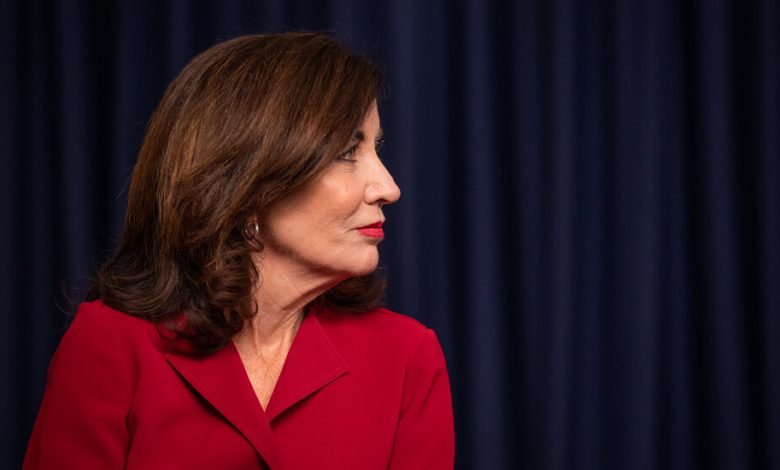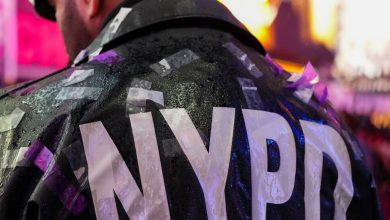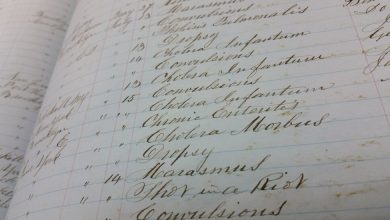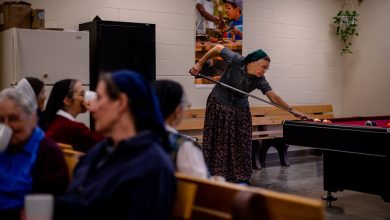Hochul’s Big Choice: Picking New York’s Most Powerful Judge

Gov. Kathy Hochul’s impending selection of a new chief judge for New York’s highest court has become a political test, thanks to simmering discontent among state Democratic lawmakers over the court’s leadership, and as state judges around the country are poised to play bigger roles in resolving questions of fundamental rights.
New York’s top court, the Court of Appeals, drifted to the right under the leadership of Chief Judge Janet DiFiore, who led a four-member bloc that consistently voted against the court’s three more liberal judges. Now, New York’s Democratic leaders say it’s time for a change: The party is urging Ms. Hochul, a Democrat, to re-establish the court as a progressive bulwark, threatening to turn what has usually been a rubber-stamp process into a showdown. She has until Dec. 23 to make her decision.
The effort to replace Judge DiFiore, a divisive figure who stepped down this summer under the cloud of an ethics investigation, has been complicated by questions about whether she played an improper role in the elevation of an ally who could take her former position.
“We now have a court that is skewing New York inconsistent with the values of people who live here,” said the State Senate’s majority leader, Michael Gianaris, a Queens Democrat. “This is a real opportunity for us to recalibrate the court.”
For her part, Judge DiFiore disputed claims that the court had become more conservative under her tenure, and said that judges should not be guided by prevailing sentiment. “The high court does not, for obvious reasons, take into account the politics of New Yorkers,” she said.
The bench’s makeup, however, could affect many New Yorkers’ lives. The chief judge oversees not just the Court of Appeals, but the administration of the entire court system: millions of cases, more than 3,000 state and local judges and 15,000 staff members across 300 sites.
And the U.S. Supreme Court is ceding more authority to states over matters that were once resolved by federal courts. In the coming year, the seven-member Court of Appeals could confront cases involving abortion, police searches and worker protections. Recent legislation on bail reform and environmental protections could also wind up before the court.
The governor “is committed to selecting the most qualified and capable candidate to lead the Court of Appeals, and we will not comment further on the selection process,” said a spokeswoman, Hazel Crampton-Hays. A spokesman for the Court of Appeals declined to comment.
The court’s influence became clear this spring, when a 4-3 majority rejected a new map for U.S. House districts, calling it a partisan gerrymander by Albany’s Democratic majority. The court then instituted a map with more competitive districts, which paved the way for Republicans to flip several seats in the November elections. Redistricting questions could end up before the court again in the near future.
The court’s rejection of the original map sparked the animus of Democratic lawmakers, who blamed the court for the party’s midterm losses.
“If there is any silver lining, it’s that advocates and scholars and others are taking more notice of the importance of the Court of Appeals, I think for the first time,” said State Senator Brad Hoylman, the Democratic chair of the Judiciary Committee. “Finally, people are paying attention.”
In July, Judge DiFiore announced that she was stepping down from the court, saying it was a “comfortable moment” to move on to another professional chapter. She was six years into a 14-year term and four years ahead of the mandatory retirement age of 70.
She was also embroiled in a bitter conflict with Dennis Quirk, the president of the New York State Court Officers Association, who had filed a complaint against Judge DiFiore with the state’s Judicial Conduct Commission, accusing her of fostering a “systemic culture of intimidation.” Judge DiFiore said her departure had nothing to do with Mr. Quirk’s complaint.
When the Court of Appeals judges met in July to appoint an interim chief, they could not reach a consensus, a spokesman said at the time.
When they met again several weeks later, Judge DiFiore cast the deciding vote for her temporary replacement: Judge Anthony Cannataro, a newcomer who had become a judge just last year and who had voted in lock step with her on the court.
Judge Cannataro’s appointment was a break from precedent. Typically, the role of interim chief would fall to the court’s most senior judge — in this case, Associate Judge Jenny Rivera, who was appointed in 2013 and has reliably been one of the most liberal members of the court.
Judge DiFiore would not comment on the details of the decision, but she said the interim chief “must receive four votes from their colleagues, and if they don’t, senior or not, they are not going to be acting chief.” She said there was nothing improper in the chief judge casting a vote.
Still, the selection of Judge Cannataro allowed Judge DiFiore to place an ally in a strong position to be selected as her official replacement.
“The way that the acting chief judge was selected seems to be shrouded in mystery,” said Mr. Hoylman, who plans to introduce legislation to change the nomination process.
Last month, Judge Cannataro was the only sitting Court of Appeals judge to be approved by the Commission on Judicial Nomination, the 12-member body that provides a seven-person list from which the governor must select a nominee.
The commission is composed of three people appointed by former Gov. Andrew M. Cuomo, four appointed by Judge DiFiore, four appointed by state legislative leaders and one appointed by Ms. Hochul.
The court’s three liberal judges, all of them people of color, two of whom had more seniority than Judge Cannataro, were among 41 applicants for the post, according to people familiar with the process. None of the liberal judges were approved by the commission.
“It’s just totally inexcusable,” said Vincent Bonventre, a professor at Albany Law School and a longtime court observer. He pointed in particular to the omission of one judge, Rowan D. Wilson, who had been on the commission’s short list for the chief judge spot in 2015, when it last became open.
Judge DiFiore called questions about her involvement in the selection of her successor “nonsense talk,” and praised the commission’s roster of potential nominees. “It’s an extraordinarily impressive list,” she said.
Whoever takes the top job will face not only skepticism, but a daunting political and intellectual task. Many jurists, academics, lawyers, elected officials and interest groups say the court has been diminished in recent years. They point to a precipitous drop in caseload, the quality of its opinions and an increased use of unsigned memorandums to decide cases.
The court under Judge DiFiore was “pretty dysfunctional,” Mr. Bonventre said. He blamed the problem not on the judge herself but on the discordant personalities elevated to the court by Mr. Cuomo, who named her and five of the six other judges now sitting.
“By most accounts, the DiFiore administration was the worst in modern history,” Mr. Gianaris said. “It’s a combination of poor administration and extra-constitutional decision-making.”
Judge DiFiore, a former Westchester County district attorney, was confirmed in 2016. A Republican-turned-Democrat, she was a longtime ally of Mr. Cuomo, who used nominations to the bench to shore up political support, court watchers said.
During her tenure, Judge DiFiore took aim at administrative delays, commissioned a report on institutional racism and sought to consolidate New York’s sprawling and antiquated judicial structure.
Even before the pandemic, the Court of Appeals heard and decided far fewer cases under Judge DiFiore than it had in years — a scaling back that some legal observers decried as a retreat from vital issues — and decided more cases with unsigned memorandums, in which judges do not go into detail about their reasoning.
Judge DiFiore said the court chose its cases on the merits, and said the increased use of unsigned memorandums was “not what I set out to achieve,” but followed a precedent for using them when the court analyzes “well-settled” legal principles.
The court’s majority hemmed in the rights of criminal defendants, raised the bar for negligence lawsuits against municipal governments and rolled back protections for renters.
Judge DiFiore was seen — by lawyers, fellow judges and politicians alike — as a polarizing figure, who did not seek to build consensus. Criticism of her grew particularly acute on the left in the wake of the redistricting decision.
“It was not a court where dissent was tolerated or welcomed,” said Mr. Hoylman.
The disharmony was evident in decisions, in which the judges traded barbs in footnotes, like hostile litigants.
In her majority opinion on the redistricting case, for example, Judge DiFiore described the “total lack of merit” of one dissenter’s argument, and called other aspects of the liberal judges’ analyses “remarkable,” “quite extraordinary,” “nonsensical” and “impermissible.”
In response, one of the liberal judges, defending a proposed remedy that Judge DiFiore had sniffed at, wrote that the majority “seems unwilling to grasp this concept.”
Judge DiFiore, in her interview, said the court was collegial: “We were functional, we were harmonious.”
In an opinion article about the challenge of picking a new chief judge, published last month in The Daily News, Ms. Hochul seemed to allude to the tensions on the court. At the top of her list of priorities was a mandate: “We need a leader who, through intelligence and conviction, can unite the existing court so that it speaks in a strong and respected voice.”





